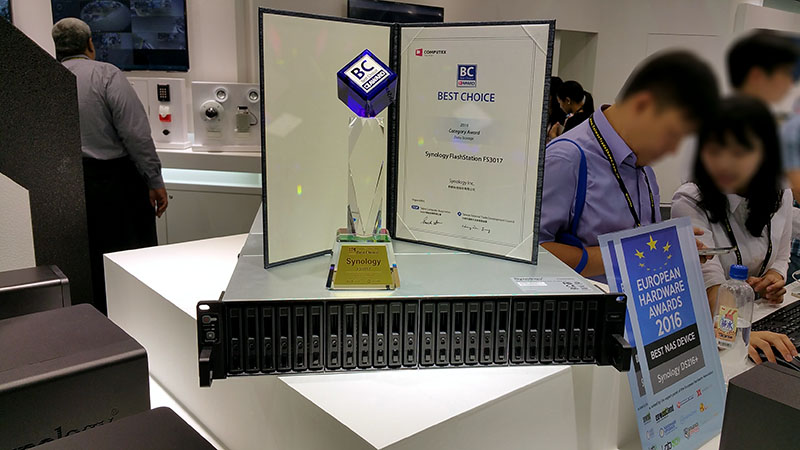We had the opportunity to get a Synology booth tour at Computex 2016. We have been covering Synology products for years and the company has grown. Several years ago the company had low power Atom desktop boxes primarily providing storage. The Synology of today has a much broader product portfolio.
Synology Desktop Gear
We saw several of the standard desktop NAS units that Synology is synonymous with. Looking at the latest DSM releases and new hardware specs, we can see that Synology has two primary vectors of growth in the desktop space: increased capacity and more features. The increased capacity is largely a function of being able to support new and larger disks. The feature support is often tied to the new low power hardware and Synology DSM.
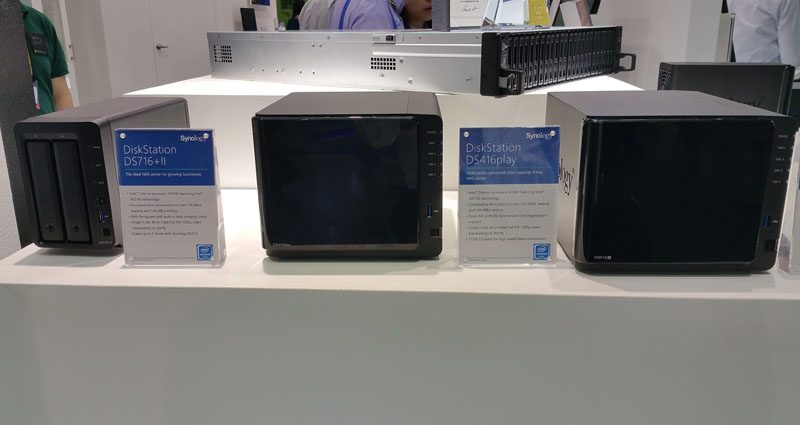
One of the other areas we saw Synology make a move to is into the Wi-Fi router space. This is an extremely crowded market segment to move into. However, with the new Synology DSM versions supporting higher-end networking functions, one could see a play where network services are handled by Synology in small office or home settings.

Synology Rackmount Gear
We had the opportunity to check out new Synology rackmount gear. Headlining the Synology booth was the all flash array called the Synology FlashStation FS3017. As Synology moves to higher-end markets such as virtualization storage, it needs to have an all flash solution to remain competitive. The FS3017 is an Intel Xeon E5 based system with 12gbps SAS and support for high-speed (25Gbps+) networking.
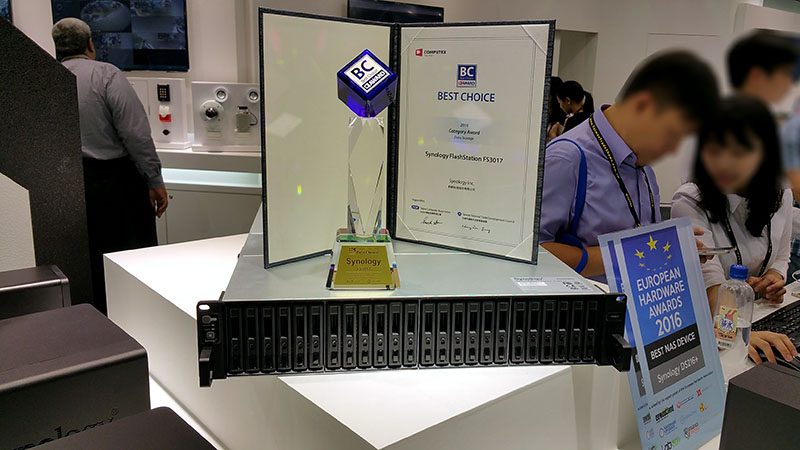
With companies like NetApp focusing on higher performance (and higher margin) storage, the low end NAS market is ripe for Synology and other vendors. Synology has software pricing models that are more conducive to the SMB market. On the Synology RS18016xs+ one can have HA as well as up to 180 drives. With 10TB drive support that is up to 1.8PB of storage.
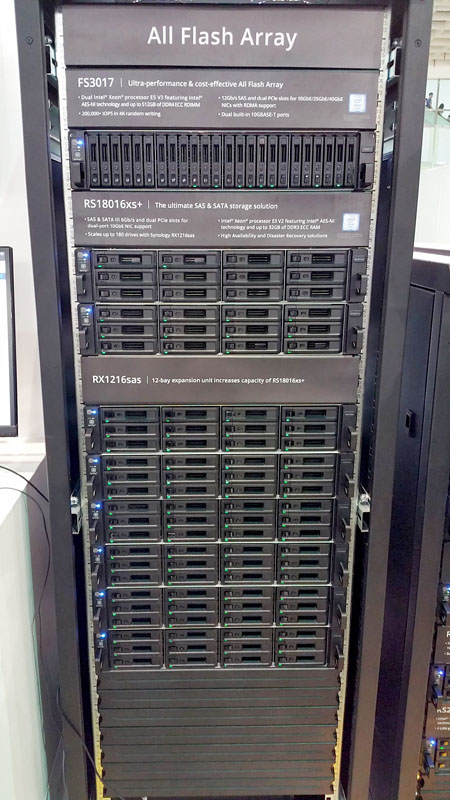
We are starting to see larger systems from Synology and accompanying technology. For example, its disk shelves now have numbers in the rear via LCD displays.
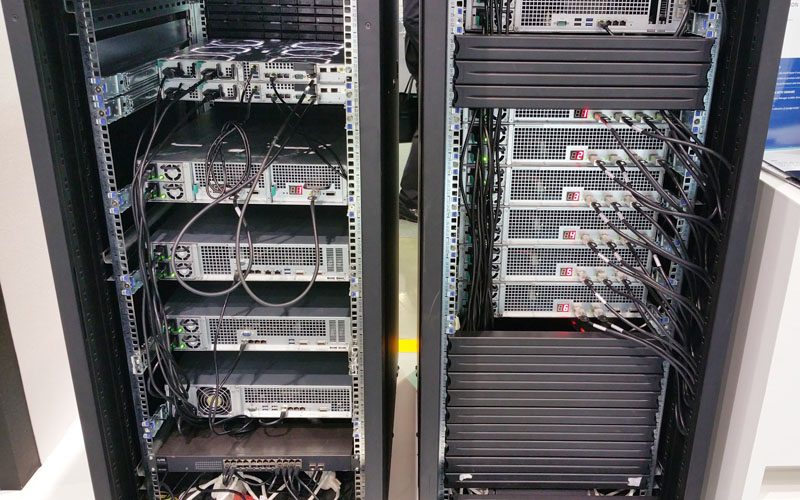
There were a number of units on display including the Intel Xeon D-1531 based RS3617xs+ and the Xeon D-1521 based RS3617RPxs+. The former used the SoC’s 10GbE links while the latter did not.
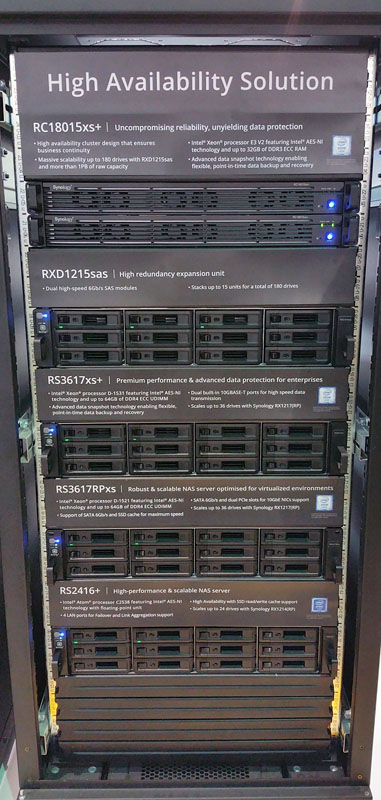
We also saw the Mellanox ConnectX-4 Lx 25GbE cards displayed as high-speed networking solutions. The latest Synology NAS units can provide network throughput well beyond a small set of 1GbE ports. As a result and can even push 10GbE speeds. We saw many server vendors support Mellanox 25GbE cards and Synology is following suit.
Beyond the hardware
We also got a brief tour of some of the software Synology has been working on. For example, Synology is expanding to provide an e-mail solution with their NAS that includes mobile client app support. For those that need an on premises e-mail solution that costs less than Microsoft Exchange, this is certainly an option.
Overall, it is clear that Synology is not content with simply being a purveyor of low end NAS units. Synology is focused on being a SMB solution provider for storage as well as basic IT needs. Moving into the router + Wi-fi space in addition do DSM’s plentiful network management features shows a desire to move into the SMB IT administrator’s tool kit for managing network functions. Likewise, Synology’s focus on adding common network software such as e-mail, well beyond normal network storage applications shows that the company is targeting on-prem software that a SMB IT admin sets up for companies. Finally, the push into larger and higher performing storage arrays shows us that Synology is serious about rack mount and expandable storage.

